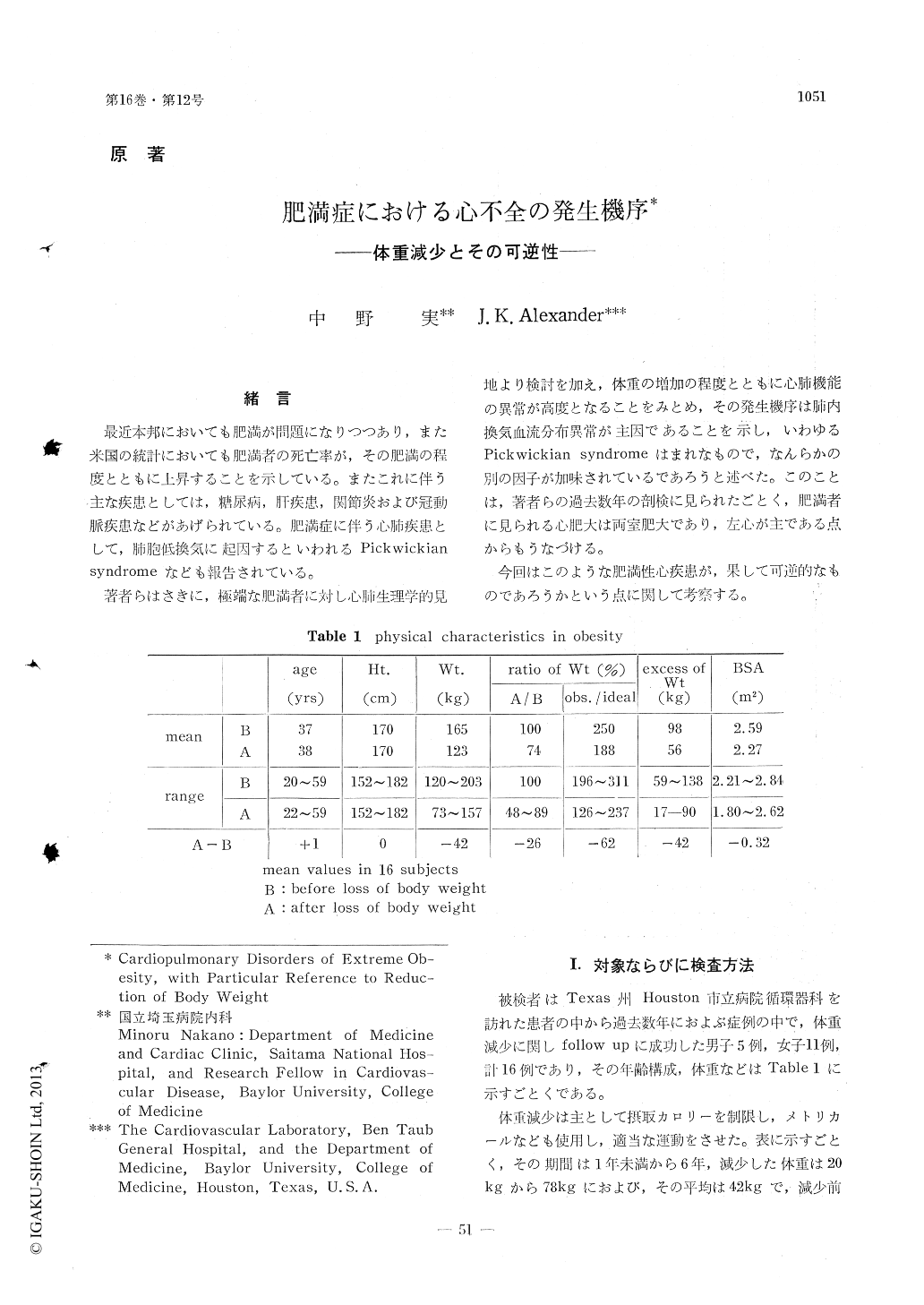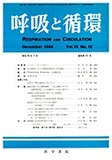Japanese
English
- 有料閲覧
- Abstract 文献概要
- 1ページ目 Look Inside
緒言
最近本邦においても肥満が問題になりつつあり,また米国の統計においても肥満者の死亡率が,その肥満の程度とともに上昇することを示している。またこれに伴う主な疾患としては,糖尿病,肝疾患,関節炎および冠動脈疾患などがあげられている。肥満症に伴う心肺疾患として,肺胞低換気に起因するといわれるPickwickian syndromeなども報告されている。
著者らはさきに,極端な肥満者に対し心肺生理学的見地より検討を加え,体重の増加の程度とともに心肺機能の異常が高度となることをみとめ,その発生機序は肺内換気血流分布異常が主因であることを示し,いわゆるPickwickian syndromeはまれなもので,なんらかの別の因子が加味されているであろうと述べた。このことは,著者らの過去数年の剖検に見られたごとく,肥満者に見られる心肥大は両室肥大であり,左心が主である点からもうなづける。
今回はこのような肥満性心疾患が,果して可逆的なものであろうかという点に関して考察する。
The follow-up by means of the cardiopulmonary function test was performed in 16 patients of extreme obesity whose body weight had successfully been reduced, and the following conclusions could be obtained.
1) As far as the ventilatory aspects are concerned, the weight reduction succeeded in increasing the expiratory reserve volume by 60%, the inspiratory capacity by 10% and the vital capacity by 15%, while decreasing the residual volume by 15% on the average, all approaching to their normal limits.
The pulmonary nitrogen clearance delay percentage which is an indication of the gas distribution in the lung was also decreased by 32%, showing an approach to its normal value.
2) Improvement was also observed in therespect of gas exchange: the arterial oxygen saturation was increased by 2%, and the venous admixture decreased by 23%.
3) As regards the cardiopulmonary function, decreases were observed in the ventilation and oxygen consumption but no changes in the arterio-venous oxygen difference, while the cardiac output and cardiac index were decreased to approach to their normal limits.
These results seem to show how heart failure is induced in obesity: that is to say, obesity is first associated with a restrictive ventilatory impairment and then with disorders of the intrapulmonary blood perfusion and gas distribution together with hypoxaemia, which stimulate the respiratory center with the result of hyperventilation.
The heart is, on the other hand, continuously laid under an overloaded condition to maintain a high output of blood demanded by the enormous body, which results in the hypertrophy of both ventricles. Further, hypoxaemia attending on obesity has had influences on the myocardiac metabolism and, finally, gives rise to heart failure. However, these results of the present follow-up have demonstrated that such changes are mostly reversible. And it must be emphasized that the physician engaged in treatment of heart failure due to obesity should not give up hope of success since it was satisfactorily treated by the restricted intake of salt and digitalis medication besides the weight reduction.
Autopsy could be carried out in one case with hypertrophy of the heart, which proved to weigh as heavy as 500g. The increased weight of the heart was mainly attributable to the hypertrophy of the left ventricle: the right ventricle was not a contributing factor. This fact seems to indicate that Pickwickian syndrome is not ascribable to the right ventricular heart-failure alone, but that some other factors in addition to obesity may participate in that syndrome.

Copyright © 1968, Igaku-Shoin Ltd. All rights reserved.


